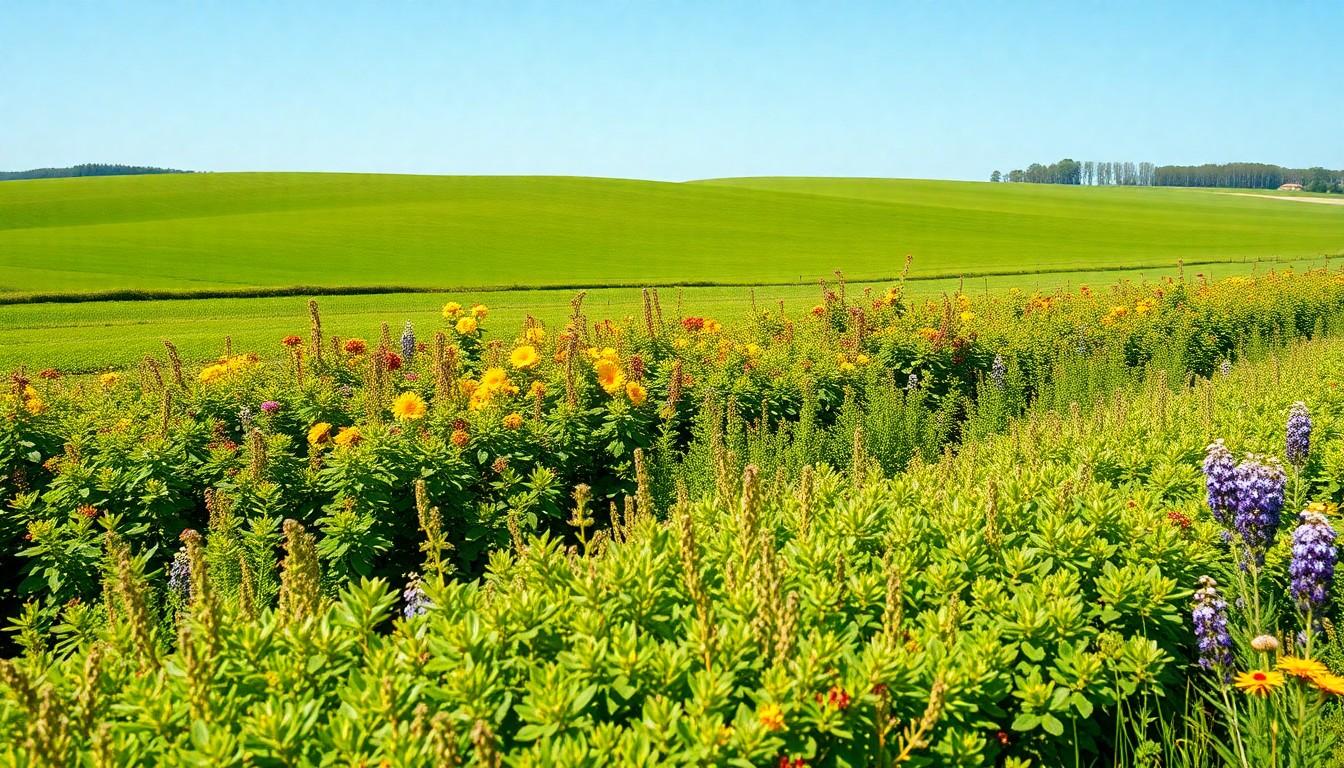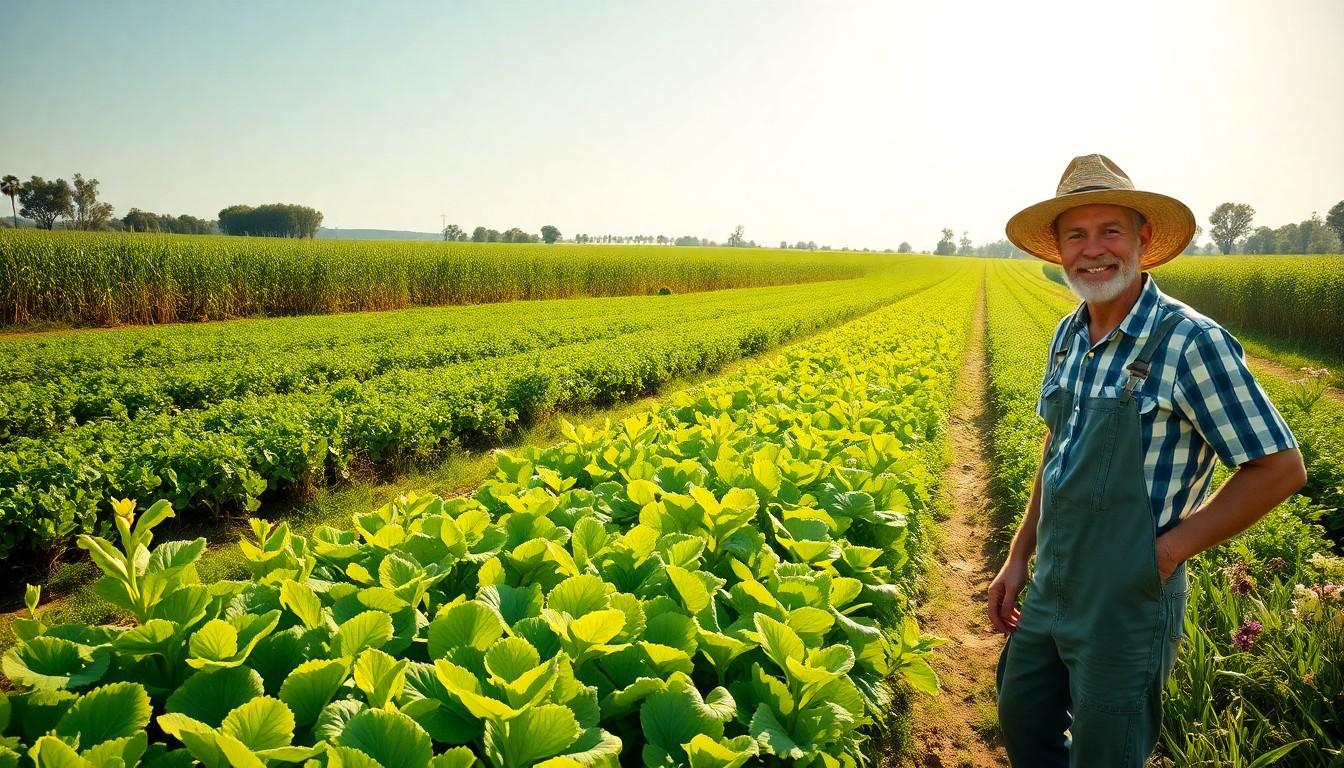In the world of organic farming, the term “buffer zone” might sound like a fancy term for a farmer’s personal space. But it’s much more than that! Think of it as the protective bubble around organic crops, keeping them safe from the pesky influence of neighboring conventional farms. These zones are crucial for maintaining the integrity of organic produce, ensuring that all those delicious veggies stay pure and chemical-free.
What Is Buffer Zone In Organic Farming
Buffer zones in organic farming serve as crucial protective areas surrounding organic crops. These zones shield organic produce from any contamination that may arise from adjacent conventional farms. Contamination can occur through airborne drift of pesticides or runoff from neighboring agricultural activities, making buffer zones essential for maintaining organic integrity.
Typically, buffer zones include non-crop areas—such as grass strips, hedgerows, or natural vegetation. These barriers help filter pollutants and provide habitat for beneficial organisms. The width of buffer zones can vary based on local regulations and the types of crops grown, ranging from 10 to 100 feet.
Farmers benefit from using buffer zones in multiple ways. Increased biodiversity occurs as native flora and fauna thrive within these areas. Soil health often improves due to reduced erosion and enhanced moisture retention, which indirectly supports crop growth.
Regulatory bodies, such as the USDA Organic, outline specific guidelines for buffer zones in organic farming. Compliance with these standards helps organic farmers uphold their certification status. Increased awareness of buffer zones also plays a role in consumer trust, as it signals a commitment to environmentally responsible practices.
Buffer zones facilitate a more sustainable approach to agriculture, balancing the need for productivity with the preservation of natural ecosystems. Implementation of these areas represents a proactive step towards organic farming that prioritizes ecological health while ensuring crop purity.
Importance Of Buffer Zones

Buffer zones play a vital role in organic farming. These areas preserve crop integrity and promote sustainable practices.
Protecting Organic Crops
Buffer zones shield organic crops from external threats. This protection maintains the purity of organic produce by acting as barriers against contamination. Areas like hedgerows or grass strips surround farms, creating safe spaces for growth. Biodiversity flourishes in these zones, attracting beneficial organisms that contribute to natural pest control. Maintaining a variety of plant life not only enhances ecological balance but helps support pollinators essential for crop production. Overall, buffer zones significantly strengthen the resilience of organic farming systems.
Preventing Contamination
Preventing contamination remains a top priority for organic farmers. Buffer zones reduce the risk of pesticide drift and chemical runoff from neighboring conventional farms. Compliance with guidelines from regulatory bodies, such as USDA Organic, ensures that these protective areas are adequately established. Widths of buffer zones can range from 10 to 100 feet, depending on local regulations and crop types. Farmers who effectively implement these zones further enhance consumer trust in their products by demonstrating a commitment to environmentally responsible practices. Emphasizing clean farming methods reinforces the overall integrity of the organic label.
Types Of Buffer Zones
Buffer zones in organic farming come in various forms, each serving specific functions to protect crops. Understanding these types aids in selecting the best option for maintaining crop integrity.
Physical Barriers
Physical barriers include structures like fences or walls designed to block contaminants. These barriers prevent pesticide drift from adjacent conventional farms. Their effectiveness relies on proper placement and construction. Height and material choice influence their efficiency; taller fences may offer greater protection against airborne chemicals. Additionally, these barriers can deter pests, further safeguarding organic crops. Farmers often implement such strategies alongside vegetative measures to create a comprehensive defense system.
Vegetative Buffer Strips
Vegetative buffer strips consist of strips of vegetation, such as grass or shrubs, planted between organic crops and conventional farms. These strips absorb and filter contaminants, minimizing the risk of chemical runoff. Varieties of plants chosen can enhance biodiversity, attracting beneficial insects that aid in pest control. Additionally, vegetative buffers stabilize soil and reduce erosion. Specific widths and plant types may depend on local guidelines and site characteristics. Overall, they contribute significantly to creating a robust ecosystem around organic fields.
Establishing Buffer Zones
Establishing buffer zones involves careful planning and management. These protective areas are essential for maintaining the integrity of organic crops.
Planning and Design
Designing buffer zones requires identifying the specific needs of organic farms. Different crops may necessitate varying buffer widths, usually ranging from 10 to 100 feet. It’s crucial to assess local environmental conditions and potential contamination sources, such as neighboring conventional farms. Planning should incorporate a mix of physical barriers and vegetative strips to maximize effectiveness. Effective designs enhance biodiversity and provide habitats for beneficial organisms, supporting natural pest control.
Maintenance Practices
Maintaining buffer zones ensures their longevity and effectiveness. Regular inspections identify any signs of degradation or contamination. Farmers should monitor plant health, ensuring that vegetation remains robust to filter contaminants effectively. Weeding and trimming promote growth and protect native species from invasive plants. Implementing maintenance schedules, especially after heavy rainfall, can help maintain soil stability and prevent erosion. By prioritizing these practices, organic farmers foster resilience within their ecosystems, supporting sustainable farming methods.
Challenges In Maintaining Buffer Zones
Maintaining buffer zones presents several challenges for organic farmers. These protective areas require careful planning and ongoing management to be effective. One significant challenge involves regulatory compliance. Local laws often dictate the size and type of buffer zones needed, leading to difficulties in meeting diverse requirements.
Environmental factors also pose challenges. Weather conditions can impact the health and stability of buffer zones. Heavy rains may cause erosion, while droughts can lead to the death of plant species that are crucial for effective barriers. Regular monitoring and timely interventions are necessary to address these issues.
Another challenge lies in the coordination with neighboring conventional farms. Communication is essential to ensure that both parties understand the importance of buffer zones. If conventional farms do not implement sustainable practices, contamination risks may increase, threatening the integrity of organic crops.
Resource allocation presents further obstacles. Farmers often face budget constraints, limiting their ability to invest in ideal buffer zone solutions. Workers’ time is also a factor, as maintaining these areas requires consistent attention. It’s essential for farmers to balance the demands of buffer zone maintenance with other farming duties.
Training personnel in best practices for establishing and maintaining buffer zones remains critical. Knowledge gaps can hinder effective management. Providing adequate training ensures that workers understand how to maintain plant health, manage weeds, and respond to environmental changes.
While buffer zones are vital for protecting organic crops, their maintenance requires significant effort. Addressing regulatory compliance, environmental impacts, neighbor relations, resource allocation, and personnel training allows for a more effective approach to sustainable organic farming.
Environmentally Responsible Practices
Buffer zones are essential for maintaining the integrity of organic farming. They provide a protective barrier against contamination from conventional agricultural practices, ensuring that organic crops remain chemical-free. By promoting biodiversity and enhancing ecological balance, these zones not only safeguard crops but also support beneficial organisms crucial for pest control.
The successful implementation of buffer zones requires careful planning and ongoing management. Organic farmers must navigate regulatory compliance and environmental challenges while fostering collaboration with neighboring farms. With dedicated efforts, buffer zones can significantly contribute to the resilience and sustainability of organic farming systems, ultimately enhancing consumer trust and promoting environmentally responsible practices.

